Palaces… always built on a monumental scale, at auspicious sites, and embellished with rich ornamentation. Unlike great temples, churches or mosques which were commissioned to mark great rulers’ authority over their subjects (unsurprisingly, religion has been used to rule people for thousands of years), palaces were constructed to showcase the power and influence of kingdoms and empires all across the globe. A colossal palace once stood in Persepolis as a symbol of Persian dominance over large swathes of land that comprised modern-day northern Greece, Pakistan and everything in between. Many centuries later another magnificent palace was erected in Beijing, a fitting home to the Son of Heaven, the sacred title for past Chinese emperors whom their subjects considered living gods.
Smaller monarchies often resort to the same method of showing off their power too: building impressive palaces more as a display of their sovereignty rather than symbolizing their dominance in their respective regions. 14th-century Korea, ruled by the Joseon dynasty, was one such medium-sized power nestled between two regional hegemons: China and Japan. In 1395, what would become Korea’s grandest palace was constructed, three years after the establishment of the Kingdom of Great Joseon, ruled by its namesake dynasty that would control much of the Korean Peninsula for more than five centuries. Located in the new capital Hanseong (present-day Seoul), Gyeongbokgung – as the palace was named – consisted of thousands of rooms, great halls and gates, a fitting residence for the great kings of the Joseon dynasty.
Literally the Palace Greatly Blessed by Heaven, Gyeongbokgung was built in the mountainous northern part of Seoul. The most imposing, as well as among the earliest, structure within the palace compound is Geunjeongjeon, the throne hall itself where the king granted audiences under the lofty and highly-ornate ceiling of the wooden building. The two-tiered stone platform on which it stands is decorated with sculptures of animals and balustrades carved with floral patterns. Directly behind the throne hall is the king’s quarters, adjacent to that of the queen’s. Deeper beyond this core section of the palace lies gardens and ponds, peppered with beautiful pavilions and different kinds of trees.
Over the years Gyeongbokgung witnessed more structures added within its enclosure by successive kings of the Joseon dynasty. The tranquility of this heavenly palace, however, came to an end when the Japanese invaded Korea in the late 16th century. Fueled by his ambition to conquer the lands to the west, in 1592 Toyotomi Hideyoshi – the de facto ruler of Japan who was also responsible for the construction of Osaka Castle – initiated military campaigns to subdue Korea, a crucial stepping stone for subjugating the more powerful Ming dynasty in China. At the beginning, the Japanese seemed unstoppable and they managed to march their way up to the northern regions of Korea. The presence of hostile forces so close to home prompted the Chinese emperor to send his army to help the Joseon king regain his lost territory. The joint Korean-Chinese forces successfully pushed the Japanese back to the south of the peninsula, although in the years that followed none of the belligerents were able to move any further from their strongholds.
Five years after launching their first attack on Korean soil, the Japanese sent more troops hoping to bring a victorious conclusion to their military campaigns. However, heavy resistance from the Koreans and the Chinese resulted in the Japanese forces further withdrawing to the coastal areas of the peninsula. With the sudden death of Toyotomi Hideyoshi in 1598, Japan withdrew all of their forces in Korea, sending their war-weary soldiers home. A few years later Tokugawa Ieyasu rose to prominence and became the most powerful shogun all over Japan, marking the beginning of a period when the country was effectively under the control of the Tokugawa shogunate. It was during this time that the East Asian power gradually shut itself off from the outside world, a self-imposed isolation which only ended more than two centuries later.
Gyeongbokgung was largely destroyed during the the Japanese military campaigns in Korea, and what remained was left derelict for more than 200 years. However in 1867, during the rule of King Gojong, a full-scale reconstruction of Gyeongbokgung was carried out by the kingdom’s prince regent, Heungseon, none other than the young king’s father. Hundreds of structures were faithfully rebuilt to their original size and appearance, once again giving Gyeongbokgung a majestic look that other palaces in Seoul could only envy. Interestingly, this later period of the Joseon dynasty’s rule in Korea is remembered as a time when the kingdom exercised an isolationist policy, while across the sea Japan under Emperor Meiji underwent major reforms known as the Meiji Restoration which saw the country reaching out to the world again after centuries of isolation.
King Gojong, who ascended the throne in 1863, faced turbulent times during his reign. Internally, widespread poverty led to a number of peasant revolts, while the newly reformed Japan which by now had acquired Western weaponry renewed its ambition to control Korea – at that time under the influence of the Qing dynasty of China. This fresh tension between the two regional powers once again highlighted Korea’s strategic importance as well as its susceptibility to foreign influence. In 1897, due to rising pressure to end Korea’s subjugation to foreign powers, King Gojong declared the end of the Joseon kingdom and proclaimed the founding of the Empire of Korea, a name purposefully chosen to emphasize Korea’s equal status with China and Japan.
Japan continued winning battle after battle against China and Russia, another great power in East Asia, cementing its position as the most powerful nation in the region. As a result, in 1905 an unequal treaty was signed between Japan and Korea – the latter already hosted a large number of Japanese troops on its soil – which effectively made the peninsula a Japanese protectorate. Five years later, however, Japan fully annexed Korea, marking the end of the Empire of Korea and the beginning of Japan’s 35 years of colonial administration on the peninsula. Gyeongbokgung, ever a symbol of Korean sovereignty, was then systematically dismantled by the occupying forces.
In 1926 Japan erected an enormous administrative building directly in front of Gyeongbokgung’s throne hall, blocking the people’s view of the structure once used by Joseon kings to receive officials and foreign dignitaries. The Neoclassical Government-General Building became the seat of the Governor-General of Korea until 1945, the year the Allied forces defeated Japan in World War II and the beginning of a divided Korea. Since the formation of South Korea, the building had been used to house the National Assembly, and later the National Museum of South Korea. However, its location within the Gyeongbokgung palace grounds was a constant reminder of the humiliating period of Japanese occupation, and therefore a plan for its demolition was conceived in the early 1990s.
Eventually, the last piece of the building which once defaced Gyeongbokgung was removed in 1996 – 70 years after its completion – and Hyeungnyemun (the second inner gate) was reconstructed on the same location. Many structures that were destroyed during the Japanese colonial period have now been rebuilt, although it will still take many more years to fully restore the entire palace complex to its original design. But with South Korea’s economy now as robust as its former colonizer’s, and the country’s rising profile on the world stage (having hosted the 1988 Summer Olympics and the 2018 Winter Olympics, as well as producing high-technology products and exporting K-pop and K-dramas) which has brought the South Koreans a rediscovered sense of confidence and pride, a fully-restored Gyeongbokgung will become the icing on the cake. And if the path for lasting peace on the Korean Peninsula is cleared, as recent developments between the North and the South suggest, the restoration of this magnificent palace of the Joseon dynasty will ultimately be a propitious reminder for Koreans on both sides of the border of what they can achieve when they eventually reunite.

The Joseon-Style Eojwa (the Phoenix Throne) with Irworobongdo (Landscape Painting of Five Peaks, A Sun and A Moon)


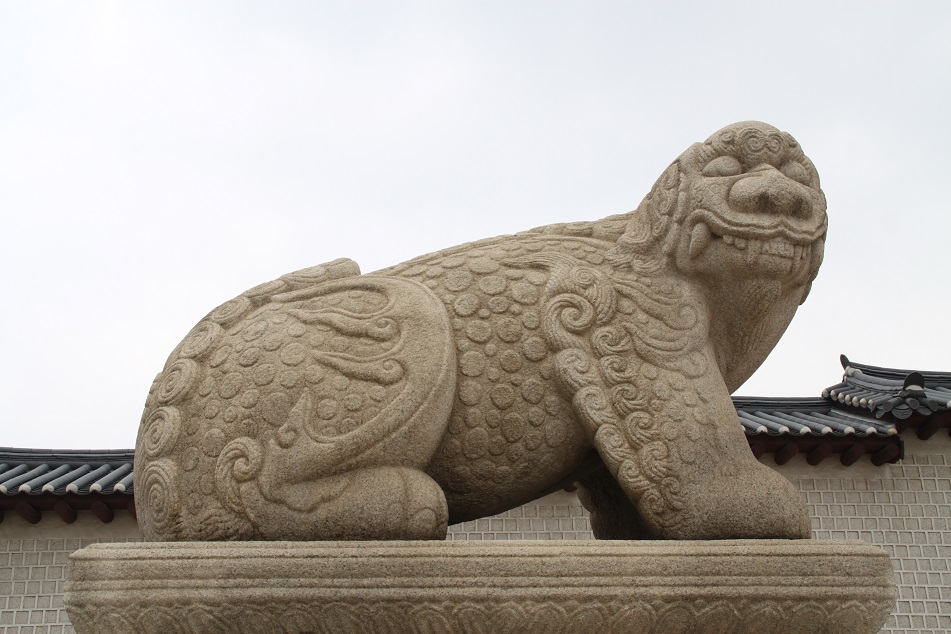

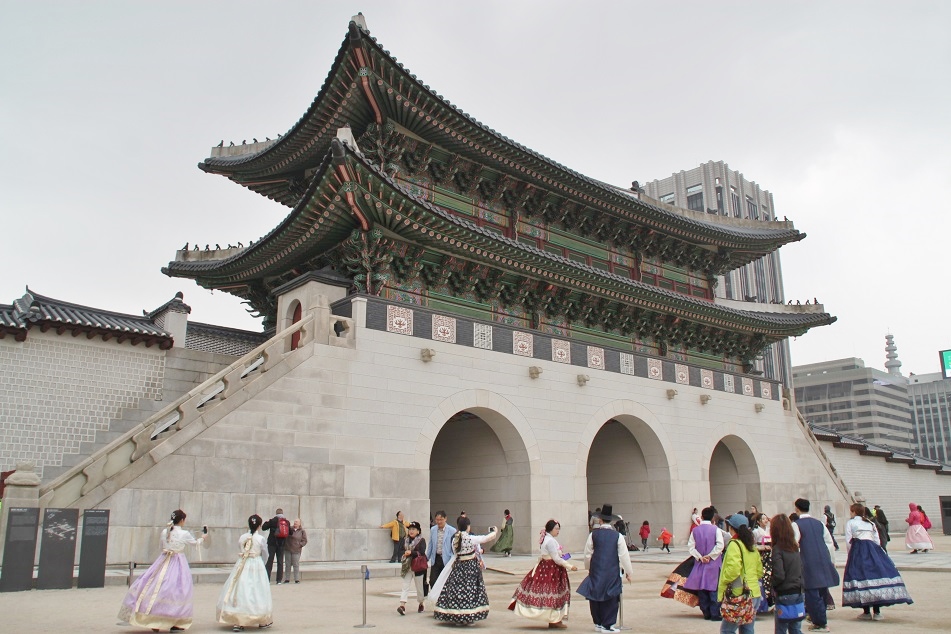
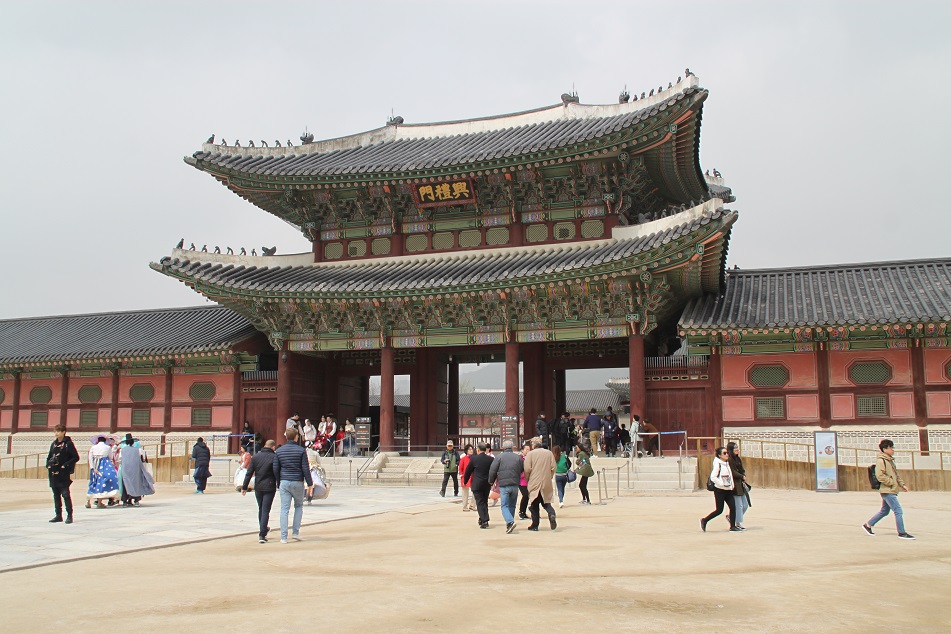

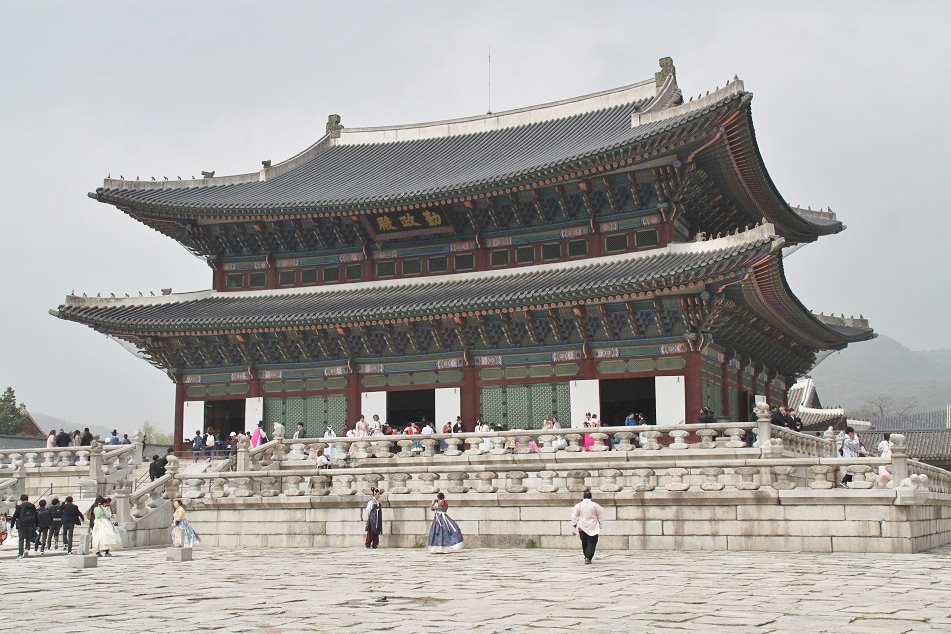


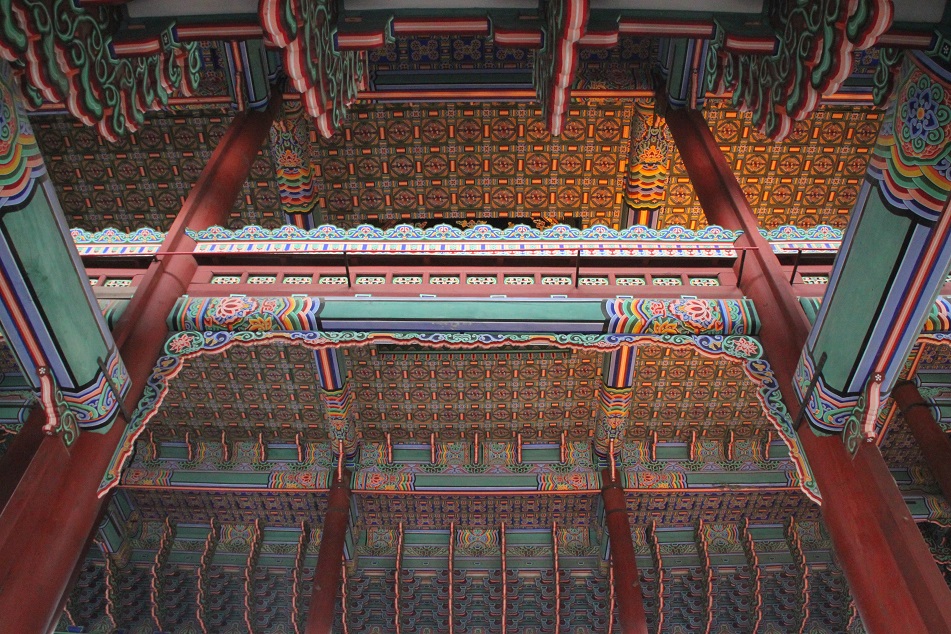






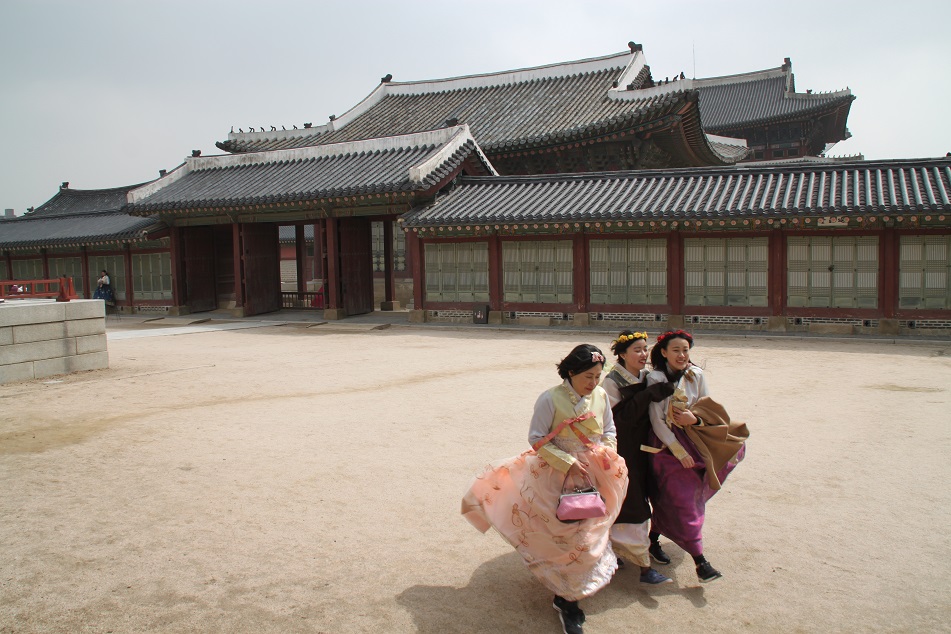

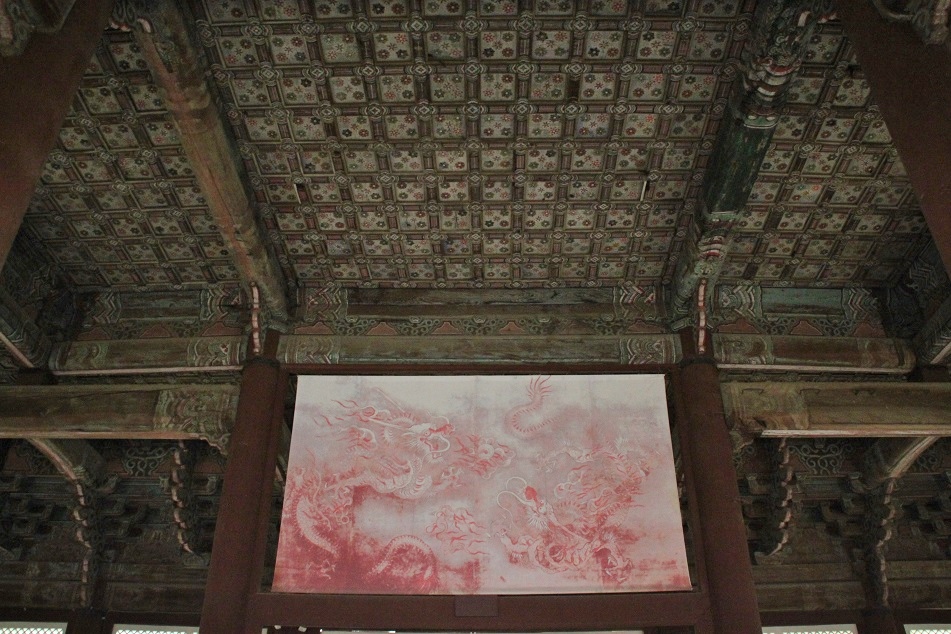




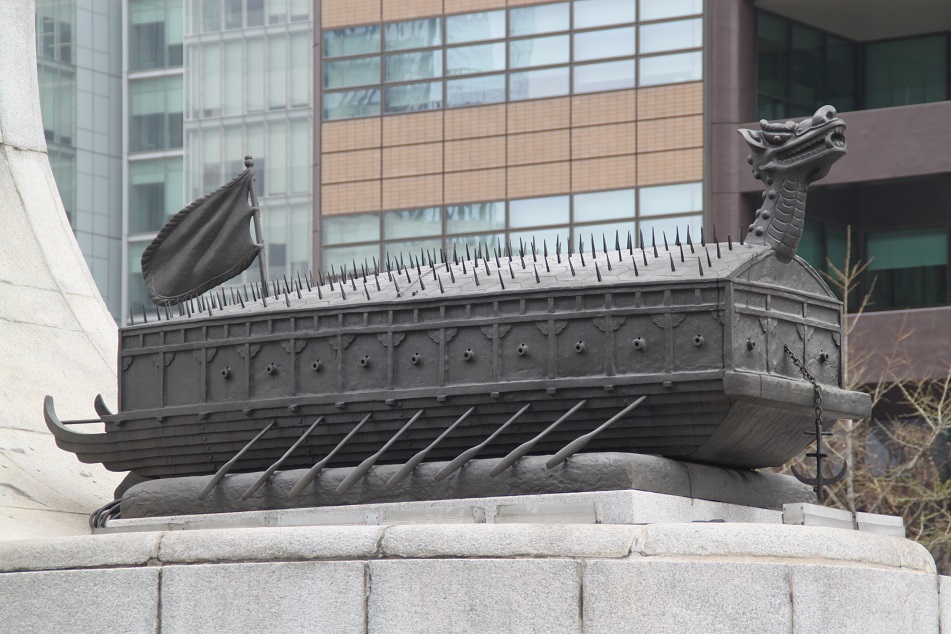
Thank you! I learned so much!😄❤
LikeLike
And thank you for reading, Tonya!
LikeLiked by 1 person
Warmly welcome. I appreciate it.😄❤
LikeLiked by 1 person
Great post as always. Enjoyed the writing and the pictures!
LikeLike
Much appreciated, Sreejith. Even on a rather cloudy day Gyeongbokgung was still impressive.
LikeLike
The turtle ship! That brought back memories from Age of Empires II’s expansion…
Geek memories aside, it was interesting to read the story of how Japan subjugated Korea, and even more interesting to know how they stuck that building in front of the Royal Palace, a sort of concrete-and-stone middle finger to the country, shall we say? Some years ago there was a bit of a stir in Italy when a Korean student at Perugia University for foreigners refused to shake hands with a Japanese, and the whole country (or at least those who cared, who weren’t many I suppose) was left rather nonplussed. Reading this, it makes more sense. Besides, I doubt there ever have been apologies, right? No Japanese Willy Brandts kneeling in front of the Warsaw Ghetto Memorial, no Japanese Helmut Kohls holding hands with Korean François Mitterrand at Verdun, I suppose?
LikeLiked by 1 person
That’s exactly what James told me; he also learned about the turtle ship from that game. I guess I missed out a lot!
Although Japan colonized much of East and Southeast Asia, the Chinese and Koreans feel more resentment toward the Japanese. Some say that’s because of the terrible things they did and the humiliation China and Korea had to endure, but others say it’s because Southeast Asians in general forget things a lot more easily as we tend to focus more on the present time. Needless to say, I’m not at all surprised with what happened at Perugia University. During my trip to Melbourne last year, I was so amazed by how honest Australia was telling about their dark past; Melbourne Museum and the Immigration Museum were two great places to learn about the nasty things that happened to the Aboriginal people as well as to the immigrants who came to Australia to seek better lives. The same thing goes with Germany which doesn’t shy away from informing today’s generation about Hitler and the Nazis, so that the country will never go down the same dark path again. The Japanese, however, seem to lag behind when it comes to embracing the truth which is probably attributed to the culture of saving face, something many Asians can relate to.
LikeLiked by 1 person
Another amazing glimpse into the history of Southeast Asia, of which we westerners know so little! Great pictures as always, Bama!
LikeLiked by 1 person
It’s always a pleasure to share a little bit of history of places I visited in Asia, Peter. Likewise, I learn about the Americas, Africa and beyond from other people’s blogs.
LikeLiked by 1 person
Awesome post as always, Bama! 🙂 I especially like the final sentence. Very meaningful!
LikeLiked by 1 person
Thanks Len! We’ll see where this unprecedented summit between Trump and Kim leads. Obviously we all hope that it will help bring peace in the Korean peninsula.
LikeLiked by 1 person
amazing!
LikeLike
Glad you enjoyed this post, Shar!
LikeLiked by 1 person
I loved this place. The haechi was one of my favourite beasts in the palace. Did you get to see the enormous vats where khimchi used to be stored?
LikeLiked by 1 person
I remember seeing big vats for making kimchi, but I don’t remember exactly whether that was in Gyeongbokgung or Changdeokgung. The haechi is quite interesting, isn’t it? I love how as soon as you exit the nearest metro station to the palace you’re greeted with statues of haechi mounted on niches within a section of the wall.
LikeLike
This place is truly remarkable and outstanding, Bama. Thanks for bringing the place and its story close to us. Thanks for the great read and for inspiring me to add this place to my bucket list! 🙂
LikeLike
My pleasure, Lydia. I noticed you’ve visited one of the royal palaces in Seoul, Changdeokgung, on a full moon night! Gyeongbokgung is a bigger version of it, only much of it was destroyed over the course of centuries. Hope you’ll get the chance to return to the South Korean capital and pay Gyeongbokgung a visit!
LikeLike
good
LikeLike
Thanks for reading, German!
LikeLike
This was a fun read, Bama. I always enjoy a historical timeline of events. My father lived in Korea for many years as an Army solider of the Korean War. He brought back porcelain figurines of royal guards and a temple made of wood that was placed on a silk red cloth. I am so fascinated with Asia’s history – it’s so vast and old and mysterious. BTW are the mustaches on the guards real? Or do they wear them as costume?
LikeLike
As the largest continent on the planet, Asia certainly is one fascinating big place to explore — exactly the reason why until now I rarely venture out of it. The Korean peninsula must have looked so different when your father served there. I imagine people’s prosperity on both sides of the demarcation line was rather on the same level, something unimaginable today as the South is now 20 to 30 times richer than the North. The mustaches aren’t real as they’re indeed part of the costume. Thanks for reading and sharing your memory with us, Jess.
LikeLiked by 1 person
Indeed. Just to clarify – that was my *grandfather. That was a typo. I sometimes miss those things but they make all the difference.
LikeLiked by 1 person
These photos really brought me back to when I visited during my year in Seoul! Thanks for the post and really thorough info ✌️
LikeLike
Really glad you enjoyed this post. Seoul is such a vibrant and fascinating city, and it’s definitely not a place to be missed when one happens to be in that part of Asia.
LikeLiked by 1 person
I know you were bummed about your gray, cold weather in Seoul, but in a way, it only accentuates the brilliant colors of the palace and certainly the guards. The Japanese part of the history here was fascinating. I had a long-time boyfriend in my 20s who was obsessed with Japan and particularly the Tokugawa shogunate, so I managed to learn quite a bit about that time and place in history. While my interest waned with the break-up (ha), it was reignited with your post! Having visited the palace myself without doing so much learning, I appreciate the after-the-fact history lesson.
LikeLike
I also find it inevitable not to learn about the places the people closest to you are so interested in because whenever they meet you they’ll always try to bring up stories from those places. Breakups certainly disrupt your growing curiosity, unless you’re genuinely interested in them. Gyeongbokgung was indeed still impressive despite the gray skies, and as is the case with photography during such a not-so-ideal weather, it made me pay more attention to the details of the palace.
LikeLike
Thank you for such an interesting lesson of history (with illustrations). I wish reunion of two parts of Korea as fast as possible (and without blood).
LikeLike
From what I heard the South Koreans are a little wary of this, but for sure the stability of the Korean peninsula is in the best interest of their neighbors. Thanks for reading, Victor!
LikeLiked by 1 person
I understand their concern. People of the North Korea was changed a lot since the separating.
LikeLiked by 1 person
Stunning post! And wanderlust strikes again.
LikeLike
Thanks Deboshree! Since that wanderlust within you strikes again, I guess what you need to do next is book that flight. 🙂
LikeLike
Great Photography!! good post.
LikeLike
Thank you for your kind words!
LikeLike
Wow! Love to experience ancient history. The place is so beautiful, love the architecture.
LikeLike
Preserving places like this palace does help people today not only to learn the history of the country they’re living in or traveling to, but also to provide a broader perspective on the world. Thanks for dropping by!
LikeLike
It will be interesting to see how Gyeongbokgung will look and feel as a whole once the reconstruction process is complete. I can completely understand the Korean mistrust of Japan given all the hardships and injustices they endured under those years of Japanese occupation. To wantonly bulldoze a centuries-old royal palace strikes me as something of a cultural crime; imagine if someone had the gall to do the same to Kyoto’s temples!
LikeLike
Imagine if most, if not all, of the world’s ancient monuments were reconstructed to their original appearance! 🙂 Given how Japan treated Korea during their colonial period, I can understand why there’s still resentment and distrust among the Koreans toward their neighbor, although this can slowly change through closer interactions and cultural exchanges between people from both countries.
LikeLiked by 1 person
Pingback: Jongmyo: Walking alongside the Spirits | What an Amazing World!
Pingback: Changdeokgung: The Finest of the Five | What an Amazing World!
Pingback: Changdeokgung: The Finest of the Five | What an Amazing World!